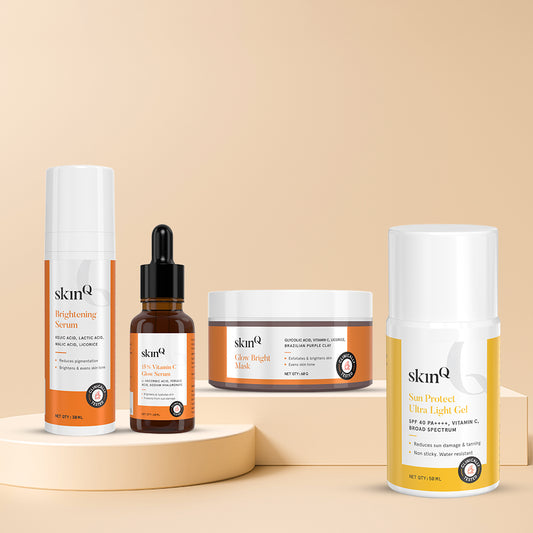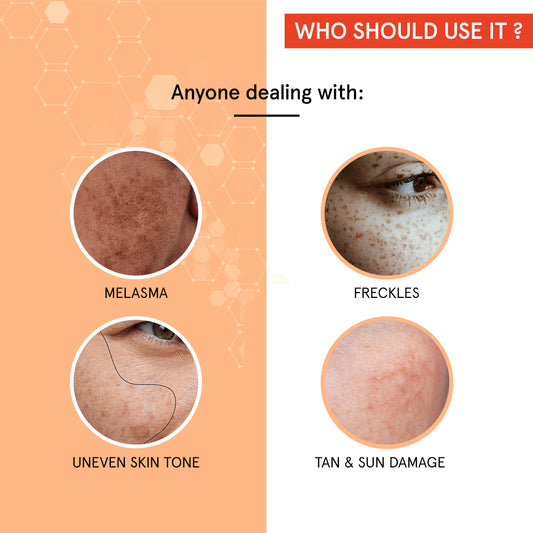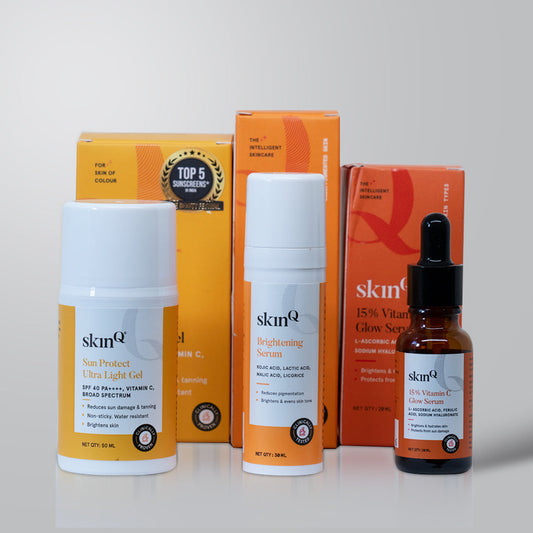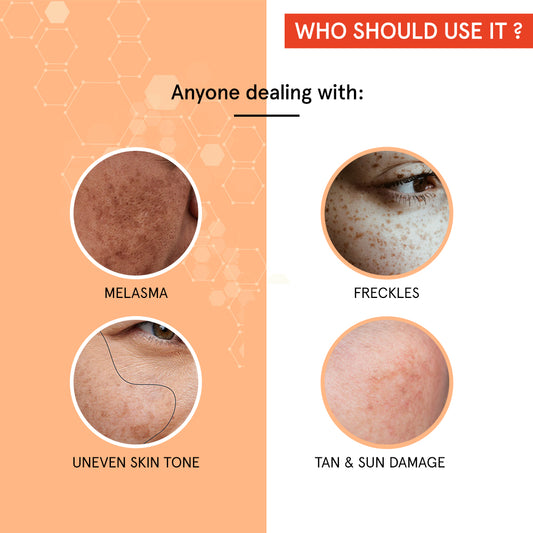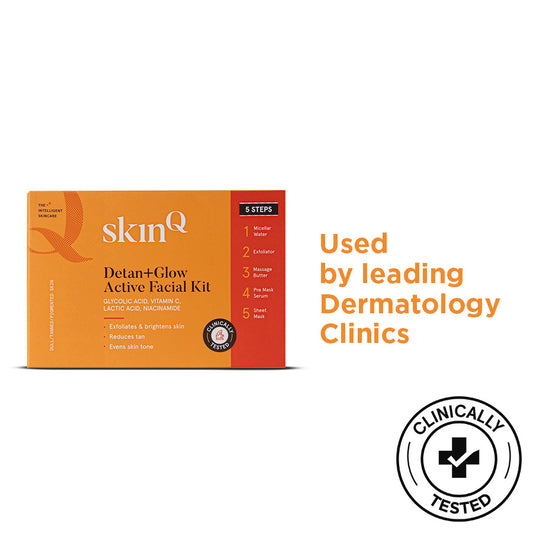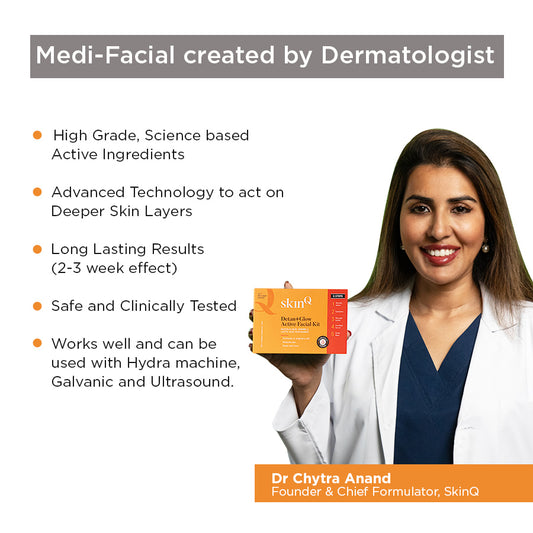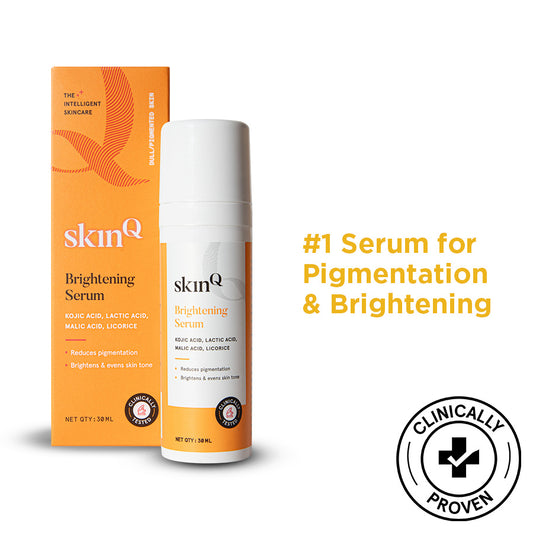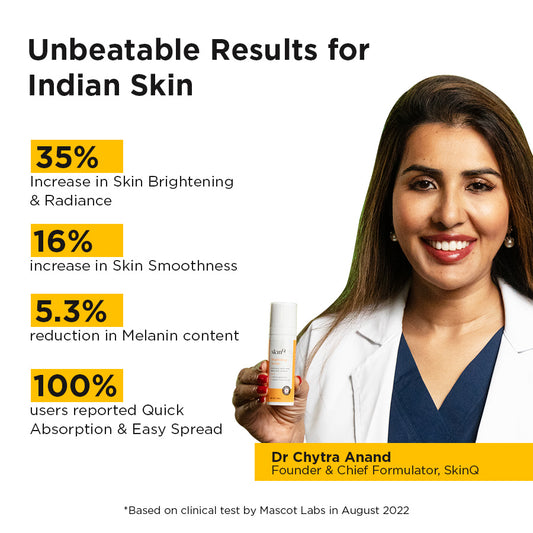Ever noticed tan lines after sun exposure? That's melanin at work!
‘Melanin’ is a natural brown-to-black pigment produced by some special cells called ‘melanocytes’. As the sun rises each day, the pigment acts as a vigilant defender of your skin against harmful UV radiation.
Melanin pigmentation levels in our bodies are influenced by various factors like genetics, environment, and lifestyle choices. While it protects against cancer, its excessive production can lead to cancer-causing mutations, making it a "double-edged sword".
That’s why, managing melanin levels is crucial for healthy skin and overall well-being. In this guide, we'll explore how to adjust melanin levels, whether you seek a tan or wish to reduce tanning.
Let’s dive in!
How To Increase Melanin Pigmentation?

Though there are not any scientific studies that prove melanin can be increased, the following ways may boost melanin production:
Include Antioxidants In Your Diet: Research suggests that consuming antioxidant-rich foods like dark chocolate, green leafy vegetables, berries, and grapes can increase melanin in the body. Additionally, multivitamins and mineral supplements may be beneficial, but consultation with a professional is recommended before taking them.
Safe Sun Exposure: Spending time outdoors under the sun is a natural way to increase melanin pigmentation. However, it’s crucial to practice safety and avoid exposure during peak hours as it can cause critical skin damage.
Use Tanning Beds: Tanning beds are known to emit UV radiation that can stimulate pigment production. It’s equally important not to use such beds excessively as they increase the risk of premature aging and even skin cancer.
Use Tanning Creams: Tanning creams are topical products that offer a tan-like appearance without UV exposure. It reacts with the skin's outer layer to produce a temporary brown color. They are safer alternatives to tanning beds.
How To Reduce Melanin Hyperpigmentation?
You can reduce melanin in your body by the following means:
Laser Treatments: In laser treatments, the areas affected by melanin hyperpigmentation are targeted through laser lights. These lights work by breaking up excess pigment, stimulating collagen growth, and fading dark spots gradually.
Use Melanin Creams: There are several melanin creams in the market that contain ingredients like Kojic Acid, Vitamin C, Retinoids, and more. Such components inhibit melanin production, thus promoting a lighter skin.
Chemical Peeling: Chemical peels include various types of exfoliating agents, such as glycolic acid and alpha hydroxy acids, that help remove the outer layer of the skin. Such agents reduce hyperpigmentation and facilitate skin renewal processes.
Sun Protection: It is advised to use a sunscreen/sunblock of at least 30 SPF before heading out of the home. Even if it’s a cloudy day, reapply it every 2 hours. You can also shield yourself by wearing protective clothing and sunglasses.
The Effects Of Excess OR Deficient Melanin Levels
Higher melanin levels result in hyperpigmentation, causing dark spots, melasma, and uneven skin tone. Conversely, low melanin production leads to hypopigmentation, seen in conditions like albinism and vitiligo, resulting in pale skin or depigmented patches.
Conclusion
Undoubtedly, the skin color pigment melanin emerges as the valiant warrior, tirelessly protecting your skin and preserving its health against the forces of nature. But, it’s equally important to maintain a healthy level to avoid serious skin illnesses.
Whether you're looking to increase or decrease melanin, we advise you to follow caution and consult with healthcare professionals. After all, it’s the matter of the largest organ of the human body, isn’t it?



